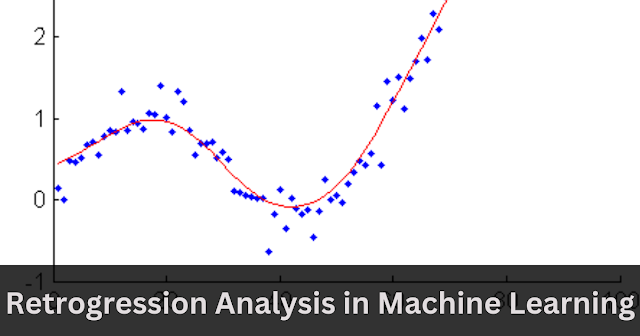1. Introduction
The idea of mind-reading has long captured the imagination of humans. While it may seem like the stuff of science fiction, recent advancements in artificial intelligence (AI) have brought us closer to understanding and decoding human thoughts and intentions. Mind-reading AI is a field that explores the potential of AI systems to interpret and analyze human brain activity, opening up a world of possibilities and ethical considerations. In this article, we will delve into the concept of mind-reading AI, its applications, and the implications it holds for society.
2. Understanding Mind-Reading AI
Mind-reading AI refers to the use of artificial intelligence techniques to interpret and understand human thoughts, emotions, and intentions. By analyzing brain activity patterns and neural signals, AI systems aim to decipher and make sense of the intricate workings of the human mind. While it may not achieve the level of "reading minds" as portrayed in popular culture, mind-reading AI has the potential to provide insights into human cognition and behavior.
3. How Mind-Reading AI Works
Data Collection and Analysis
To enable mind-reading AI, data collection is a crucial step. This typically involves the use of brain imaging technologies such as functional magnetic resonance imaging (fMRI) or electroencephalography (EEG). These techniques capture brain activity patterns while individuals engage in specific tasks or experience certain stimuli.
Neural Networks and Machine Learning
Once the data is collected, machine learning algorithms and neural networks come into play. These AI models analyze the brain activity data and identify patterns and correlations. Through a process of training and optimization, the AI system learns to associate specific brain activity patterns with particular thoughts, emotions, or actions. Over time, the system becomes more accurate in its interpretations.
4. Applications of Mind-Reading AI
Healthcare and Medicine
Mind-reading AI holds promise in the field of healthcare and medicine. It can aid in diagnosing and treating mental health disorders by providing objective insights into a patient's mental state. It can also assist in neurorehabilitation, allowing individuals with motor disabilities to control devices or prosthetics using their thoughts.
Human-Computer Interaction
Mind-reading AI has the potential to revolutionize human-computer interaction. By understanding a user's intentions and desires, AI systems can provide personalized and seamless experiences. This could enhance virtual reality interactions, improve user interfaces, and enable more intuitive control of digital devices.
Marketing and Advertising
Mind-reading AI also has implications for marketing and advertising. By analyzing brain activity and emotional responses to advertisements, companies can gain insights into consumer preferences and tailor their marketing strategies accordingly. However, ethical considerations regarding privacy and consent must be carefully addressed in this context.
5. Ethical Considerations
The development and implementation of mind-reading AI raise significant ethical considerations.
Privacy and Consent
Collecting and analyzing individuals' brain activity data raises concerns about privacy and consent. Strict safeguards must be in place to ensure that personal information is protected and that individuals have full control over the use and sharing of their data.
Manipulation and Control
Mind-reading AI has the potential to influence or manipulate individuals' thoughts and behaviors. This raises ethical questions about autonomy, consent, and the potential for abuse. Responsible regulation and guidelines are necessary to prevent misuse of this technology.
Bias and Discrimination
The interpretation of brain activity patterns can be influenced by various factors, including cultural and societal biases. Ensuring that mind-reading AI systems are free from bias and do not perpetuate discrimination is crucial to maintain fairness and equality.
6. The Future of Mind-Reading AI
Advancements in Technology
As technology continues to evolve, the accuracy and capabilities of mind-reading AI are expected to improve. Better brain imaging techniques, more sophisticated AI algorithms, and increased understanding of the human brain will contribute to further advancements in this field.
Responsible Implementation
Responsible implementation of mind-reading AI is essential. Transparent guidelines, informed consent, and public discourse are necessary to navigate the ethical challenges and ensure that the benefits of this technology outweigh the risks. Collaboration between researchers, ethicists, policymakers, and the public is crucial for its responsible development.
Conclusion
Mind-reading AI represents a fascinating frontier in artificial intelligence. While it offers potential benefits in healthcare, human-computer interaction, and marketing, it also presents complex ethical considerations. Balancing innovation and responsibility is key as we explore the possibilities of mind-reading AI. By addressing privacy concerns, preventing manipulation, and ensuring fairness, we can harness the power of this technology for the betterment of society.
FAQs (Frequently Asked Questions)
1. Can mind-reading AI read my thoughts exactly as I experience them?
No, mind-reading AI cannot read thoughts in the same way as you experience them. It interprets brain activity patterns and makes inferences based on correlations observed during training. It does not have access to your innermost thoughts or emotions.
2. Is mind-reading AI currently being used in real-world applications?
While mind-reading AI is an active area of research, it is still in its early stages. Some applications, particularly in healthcare and human-computer interaction, are being explored. However, widespread adoption is yet to come.
3. Are there any risks associated with mind-reading AI?
Yes, there are risks associated with mind-reading AI, particularly in terms of privacy, manipulation, and bias. These risks need to be carefully managed through robust regulations and ethical guidelines.
4. Can mind-reading AI be used to detect lies or deceit?
The accuracy of mind-reading AI in detecting lies or deceit is still a subject of ongoing research. While it shows promise in detecting certain brain activity patterns associated with deception, more research is needed to develop reliable and accurate lie detection methods.
5. Will mind-reading AI replace human therapists or psychologists?
Mind-reading AI cannot replace human therapists or psychologists. It can assist in providing additional insights and objective data, but human expertise and empathy are crucial in therapeutic settings.

.png)

.png)
.png)
.png)
.png)
0 Comments